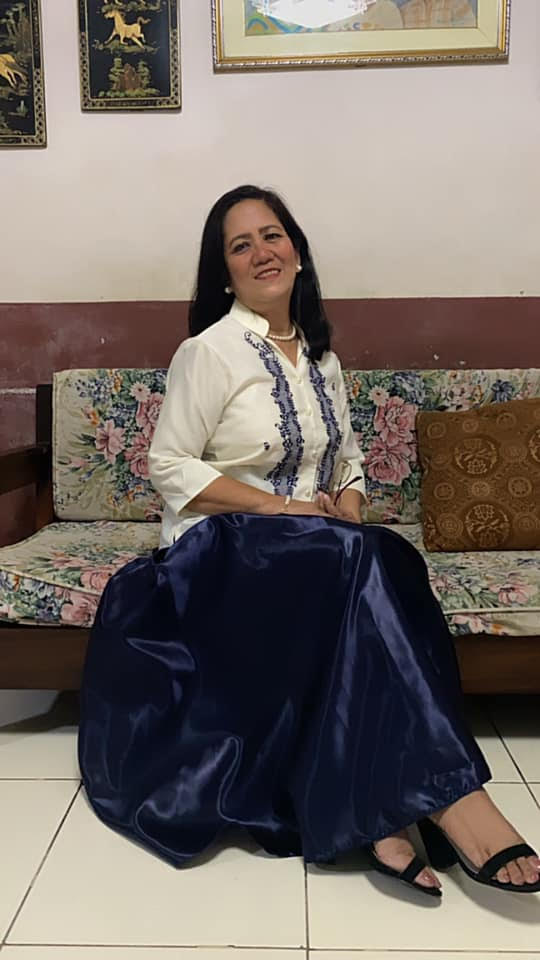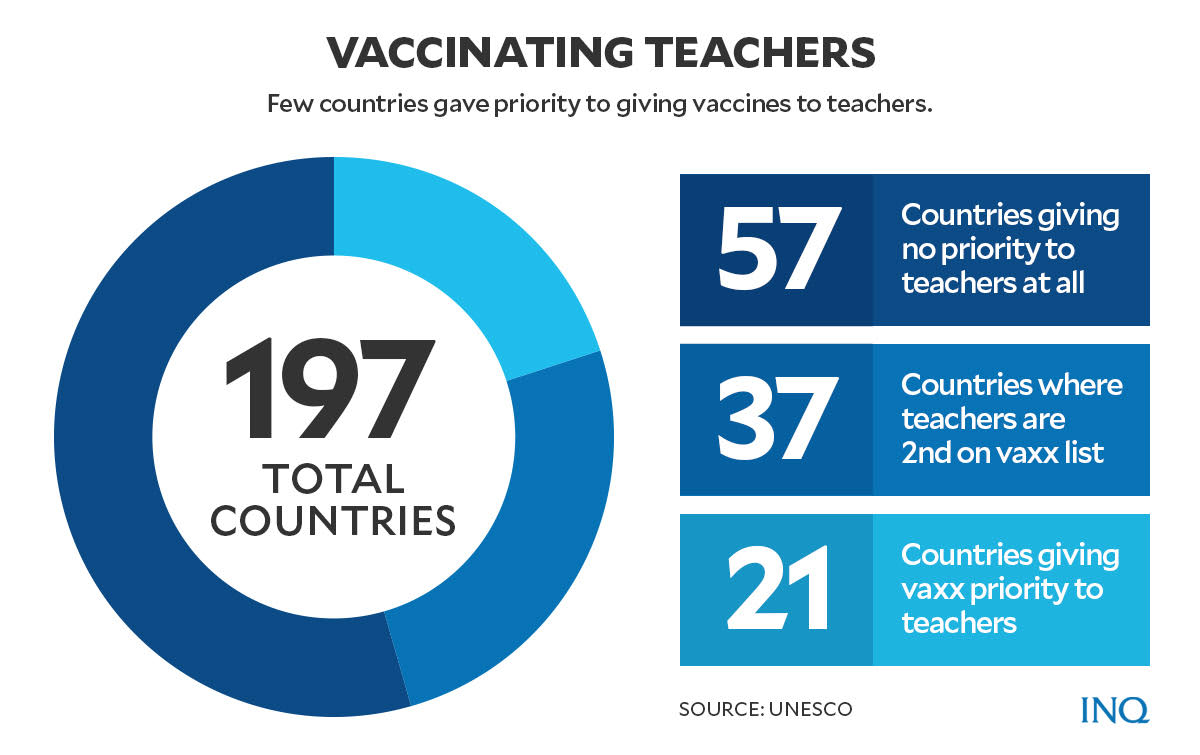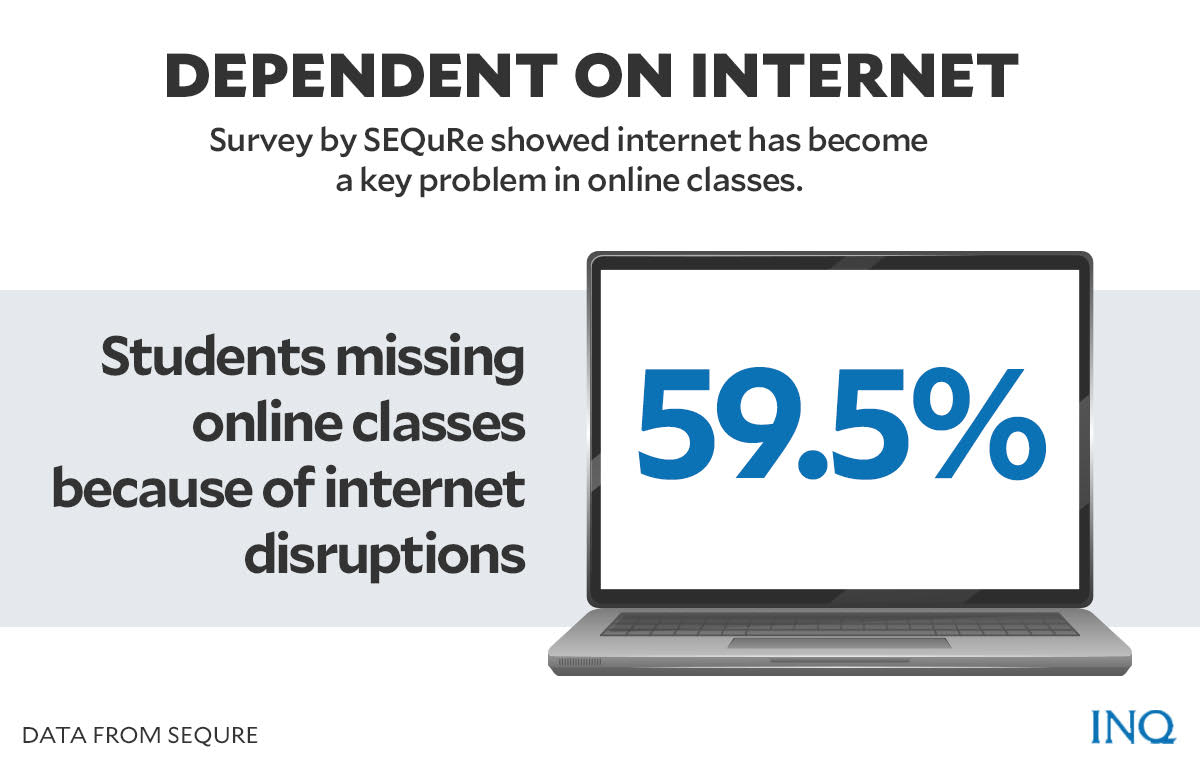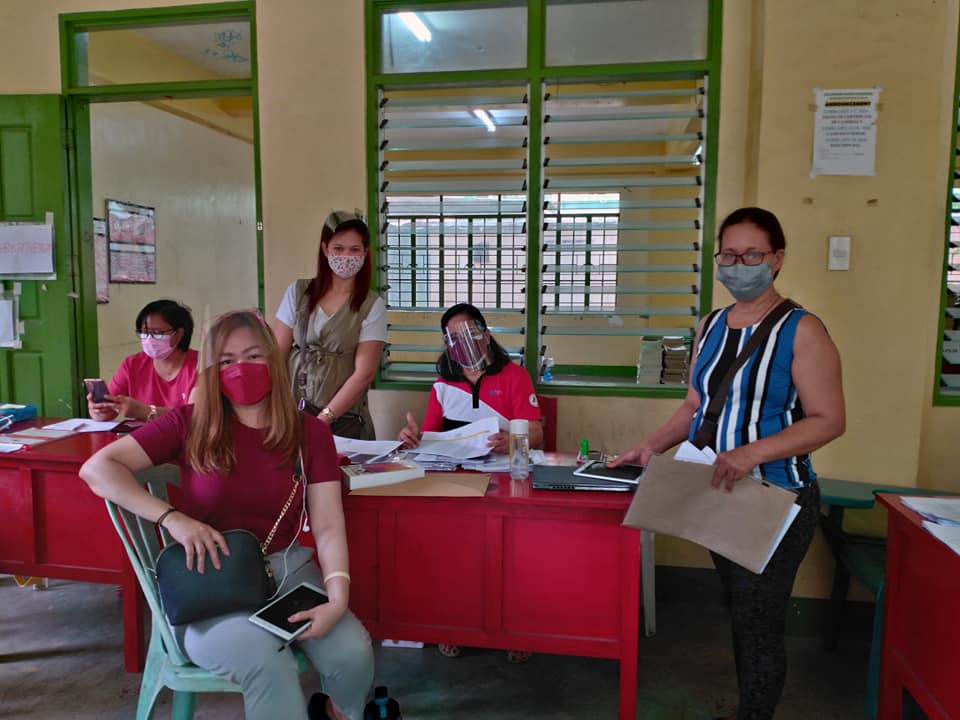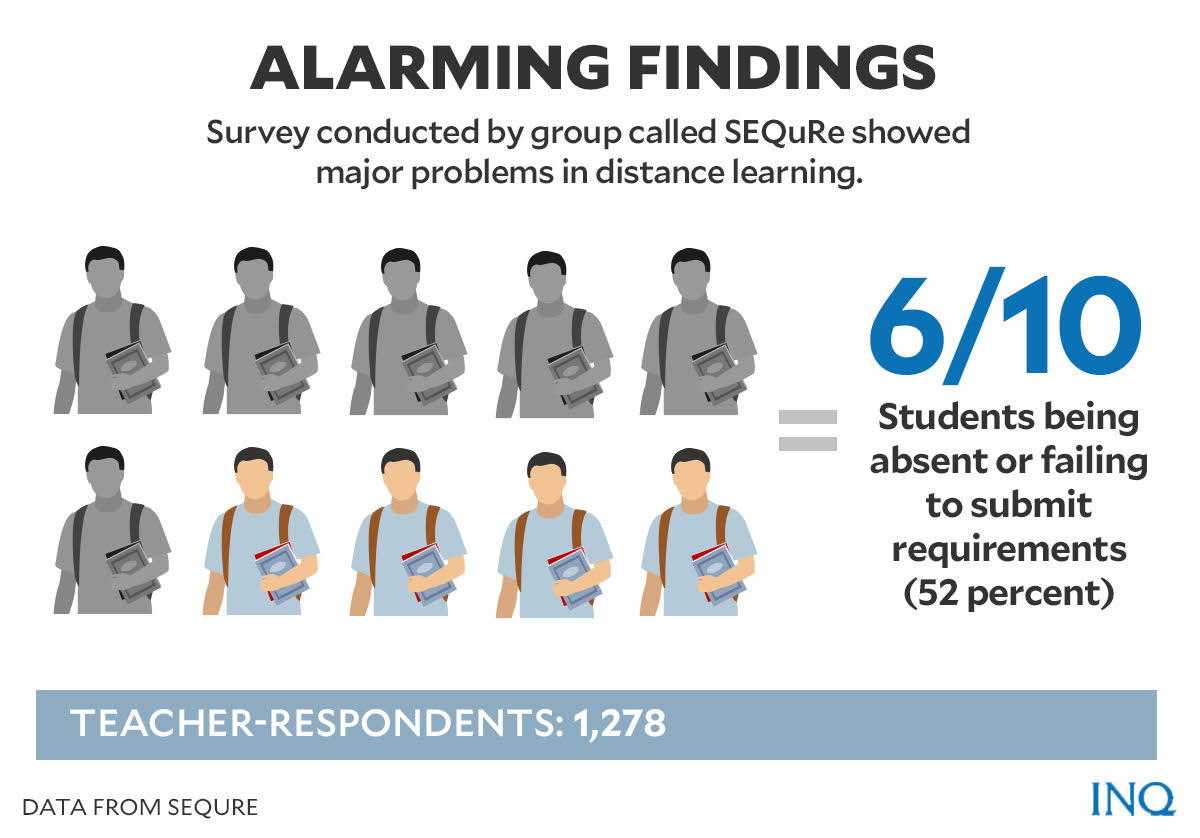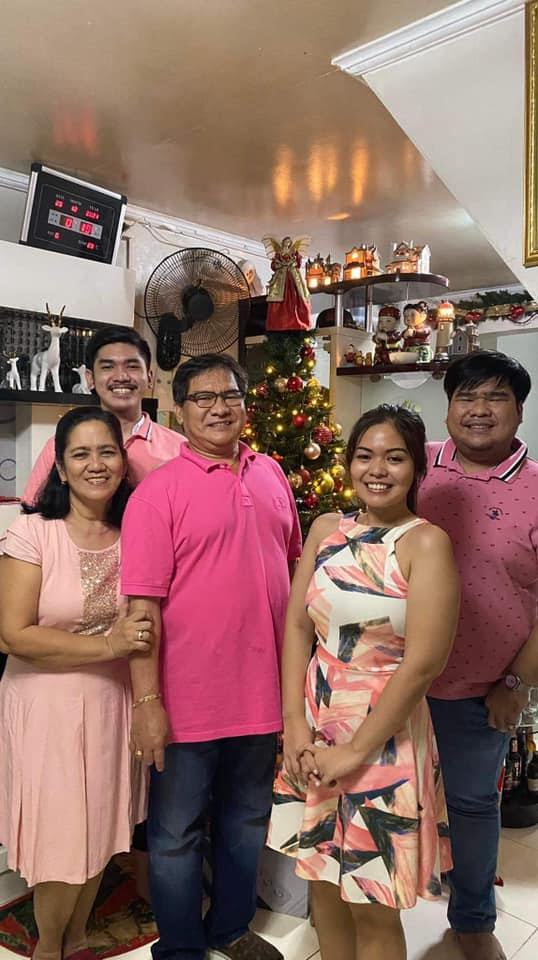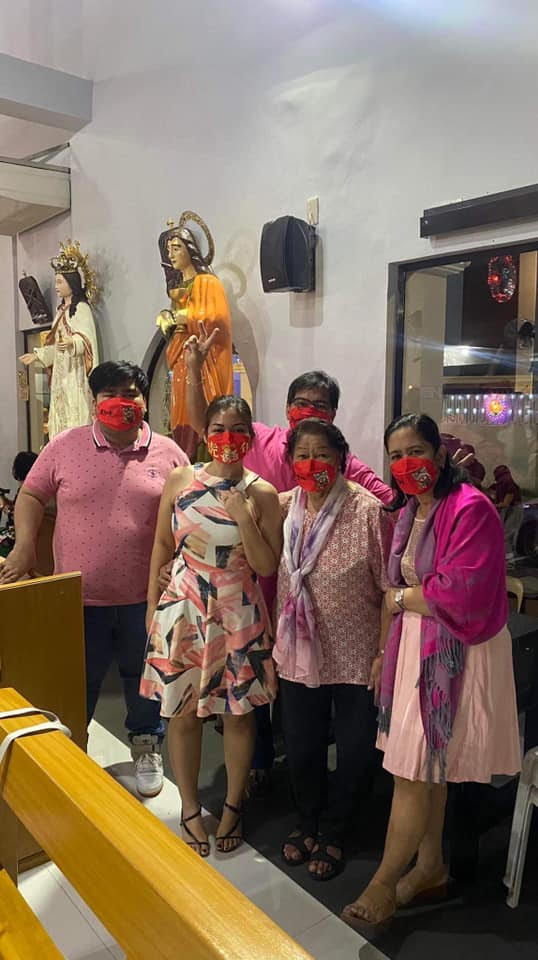A year full of teachings, lessons and gratitude
MANILA, Philippines—When the COVID-19 pandemic struck the country last year, face-to-face learning was disrupted as schools nationwide were forced to close as physical classes were considered too risky for one reason—SARS Cov2, the virus that causes the disease, is transmitted mainly by close contact between people.
Teachers, including students, suddenly had to maneuver their way into remote learning and rely on the internet, mobile devices, and computers to resume classes, as the world tried to lock the virus out.
One of those who had to adapt to abrupt changes was Helen Yap, who is already in her 26th year as a school teacher when the pandemic struck.
As a teacher who was used to the conventional type of learning—one that is not necessarily and heavily reliant on the internet and gadgets for lectures—suddenly shifting to “hybrid” learning—a mix of distant online learning and modules delivered to students’ doorsteps or picked up from DepEd sites—was a considerable challenge.
“[T]he first-time talagang nangangapa kami, what to use, how to use, so talagang we attended a lot of webinars,” Yap told INQUIRER.net.
Article continues after this advertisement(We had to figure out what [programs] to use, how to use [them], so we really attended a lot of webinars.)
Article continues after this advertisement“When we were in older days, the regular days of teaching, we have these visual aids [posted on] blackboard. How are we going to do that this time?” she added.
While she already knew the basics of creating Powerpoints for lectures, Yap said she pushed herself to further improve her skills, as she knew that she was not the only one who was adjusting to the new normal type of learning.
“I already know how to make a Powerpoint pero yung ngayon talagang nag pilit ako mag aral ng mas magandang powerpoint how to make a better powerpoint para mas presentable at encouraging sa mga bata, since I know if I am having a hard time as a teacher with this new situation, especially ang mga bata na naninibago,” she said.
(I already knew how to make Powerpoint presentations, but I really pushed myself to learn how to make better presentations that are more presentable and encouraging to students. Since I know if I’m having a hard time as a teacher with this new situation, more so the students who are still unaccustomed.)
In her first year of teaching under the new normal, she noticed that many students struggled with internet access—a must in attending classes during the pandemic.
Other people have also misunderstood the concept of “academic ease” and expected the students to automatically pass all their subjects under distance learning.
According to the Department of Education (DepEd), academic ease involves measures that will ensure flexibility in teaching and learning and help students and teachers adjust better under the new modes of learning during the pandemic.
Among the recommendations for academic ease pushed by advocacy groups include lesser academic requirements, heightened consideration of deadlines, and allowing asynchronous classes—especially for students who cannot attend synchronous classes on time due to internet connectivity issues.
Fast forward to 2021, nearly two years into the pandemic, Yap said the situation has already improved.
“Definitely, it is easier [this year] because we are already used to the media to what we are using in order for us to teach our students,” she said.
“[I]f we will compare last year to now, definitely this [year] is much better kasi we are already well-versed, I want to think of that, and we are already acquainted with the technology. Onti na lang ang mga ineexplore pa namin.”
(There are only a few areas or things that we still have to explore.)
“I am very happy to tell you (that the students are also well-adjusted now),” she added.
Still, she admitted that there were still many challenges mentors and learners face.
One of these was her occasional commute whenever teachers were called to go to school.
Yap said she cannot help but feel anxious whenever she commutes for two hours mainly because of fear of contracting COVID-19.
She also explained that while many of her students have already adjusted to remote learning, not all of them have improved—in terms of performance and participation in class.
“When it comes to teaching, still, hindi naman 100% yung sinasabi ko na nagbago yung mga bata. Isa sa challenges ngayon ay hindi pa rin lahat nagko-comply, yun nga yung mga nagte-take advantage sa situation,” Yap explained.
(When it comes to teaching, not all students have changed this year. One of the current challenges we face is that many students still fail to comply; usually, those are the ones who take advantage of the situation.)
A year of lessons
This year, it was not only her students who learned or gained knowledge under the hybrid learning system amid the COVID-19 pandemic.
Yap shared that the current learning setup has taught her a lot of things this year—one of which was to adjust, embrace, and make use of technology to impart more knowledge to her students.
Aside from that, the pandemic has also taught her to become more patient and understanding, not only to students but also to people around her.
“[S]iguro kung nakilala ninyo ako na pasensyosa, kung nakilala niyo ako na mahaba-haba ang pasensya ko [noon], parang mas naging mahaba ang pasensya ko ngayon,” said Yap.
(Some people already know that I am a patient person, but I became more patient this time.)
“Because I understand na hindi lang naman ako ang nag aadjust, much more ang mga bata. [K]ung ako pino problema ko lang ay paano ko maitatawid yung pagtuturo ko sa kanila, meron pa silang ibang problema,” she added.
(Because I understand that I’m not the only one adjusting in our current setup, much more the children. If the only thing I’m worried about is how I will successfully teach them, the students have their problems as well.)
As a teacher, she noticed that many of her students suffered from mental health issues during the pandemic, which could have been made worse by the pressure brought by the new learning system.
Data from the National Center for Mental Health Crisis Hotline showed that the number of calls from children seeking help spiked by 347 percent, from 3,178 in 2019 to 11,016 in 2020.
The CWC said that it was alarming, given that 12.48 percent or at least 1,375 of the total number of calls received last year were classified as suicide-related calls.
READ: The crisis within: Suicides rise as COVID takes its toll on lives, livelihood
In October last year, the group Samahan ng Progresibong Kabataan reported 17 suicide cases among students last school year.
The mental health problem among children, according to medical experts, was also heightened by the pandemic as children were left with no choice but to stay inside their houses.
READ: National Children’s Month: Cause for celebration or worry?
“Marami akong estudyante sa ngayon na parang emotionally depressed, maybe because of what is happening around us, so idadagdag ko pa ba yung sarili ko para problemahin nila, of course not,” Yap said.
(I have many students now who seem to be emotionally depressed, maybe because of what is happening around us. Should I add myself to their problems? Of course not.)
“Mas naiintindihan mo kasi sila ngayon eh,” she added.
(You can understand them better nowadays.)
Yap said that distance learning has allowed her to help her students and their parents when it comes to mental health issues—something that she agreed was not openly discussed in schools during the past years.
“Palagay ko, napakalaking bagay na natuto tayong i-consider ang feelings at sitwasyon ng mga tao sa paligid natin, di lang yung nari-reach out mo. Mas naging malawak din yung pagtingin mo sa mga bagay-bagay,” she said.
(I think it’s a big deal that we have learned to consider the feelings and situation of the people around us, not only those who we can easily reach out to. You start to see things from a broader perspective.)
Sharing blessings
For Yap and her family, Christmas is all about giving and sharing blessings with other people.
“We, my family and I, make it a point to share,” she said.
It has been a tradition for her family to share something with people in need every year. However, this time, she said her three grown children have also started their own “projects.”
“Every year, we try to share something, so (it’s still the same) [this year],” said Yap.
“Yung mga anak ko nag simula na rin mag share, meron na rin silang sari-sarili nilang projects. Minsan pinag-uusapan din namin, yung kunyari katulad ng sabi ng bunso ko, ‘mama may nakita ako doon na bahay ampunan, pwede bang alamin natin kung ilan ba yung mag bata doon,’ yung ganon,” she detailed.
(My children have also started sharing through their own projects. Sometimes we talk about it. For example, my youngest recently told me, ‘mama, I saw a foster home. Can we know how many children are in there?’ just like that.)
She also reminisced about how fulfilling it was to share, even in the smallest ways, with less fortunate people.
“I am not rich, but I am trying to share whatever we can (even through smallest things like giving out bowls of soup with egg),” Yap said.
“Ang isa sa pinaka fulfilling…we go around pag nakakita ka ng magbobotoe, yung mga bata na nagtitinda ng basahan, pag ianbutan mo sila ng bowl with that sopas…plus maliit na regalo lang, maaring laruan, maaring gamit, they will thank you but they will not look at you,” she continued.
(It’s really fulfilling when we go around and hand out bowls of soup and some presents to children in the streets, and they will thank you, but they will not look at you.)
“[T]hey will be looking at the gift, they will be loking at that food so nakita mo how appreciative they are doon sa food. Di na baleng di sa akin, pero alam mong naappreciate nila yun kasi yung ang kailangan [nila],” she added.
(They will be looking at the gift. They will be looking at that food. You can really see how appreciative they are. It doesn’t matter whether or not they will look at me; it’s enough to know that they appreciate what you gave to them because that’s what they needed.)
This Christmas, Yap said she would also continue to pray for her family and those who are going through a hard time, including those who were hit by Super Typhoon Odette and the COVID-19 pandemic.
Celebrating Christmas
Despite the pandemic, she said her family has been trying to celebrate Christmas “as normal as it is” while sharing whatever they can with people in need.
“As much as possible, we are trying to celebrate Christmas as normal as it is,” she said.
“But of course, at the back of your mind, (you know that there are people who) cannot [celebrate], especially now not only with the pandemic but also with the recent typhoon, at the back of your mind (you know that there are people who) as much as they want [to celebrate] they cannot,” she added.
She also said she has encouraged her students to celebrate Christmas this year, despite the challenges brought by the COVID-19 pandemic.
“Talaga namang need natin i-celebrate kasi Christmas is a special time to, diba sabi nga natin na as much as possible sana everyday Christmas because Christmas is sharing lalo na sa ganitong panahon,” Yap explained.
(We need to celebrate because Christmas is a special time. Sometimes we hope it could be Christmas every day, especially during our current situation, because Christmas is all about sharing.)
She emphasized that Christmas, above all else, is not only about presents or food, but it is also the day to thank God for giving the people a redeemer, a savior.
“Christmas is sharing (whatever we can share so that all of us can celebrate),” Yap said.
“Hindi kailangan extravagant ang Christmas. Kaya nga hindi din naman tayo dapat ma guilty kasi kung alam naman natin kung hanggang saan lang ang ating celebration.”
(Christmas shouldn’t be extravagant. That’s why we shouldn’t feel guilty, especially if we know our limits.)
Endless gratitude
The pandemic, Yap said, has made her more grateful as a person.
“Mas naging grateful ako,” she said, “kahit pagod ako, lagi kong sinasabi ‘salamat po Lord sa kalakasan, salamat sa pagkakataon,’ ang dami araw-araw, it’s endless na pasasalamat.”
(I became more grateful. Even when I’m tired, I always say, ‘Lord, thank you for giving me strength, thank you for the opportunity,’ it’s an endless gratitude every day.)
She also shared the things that she is thankful for this year.
“We are very thankful that we are still here. We are very thankful that I, my family, friends, and loved ones are healthy. We are thankful that we still have the jobs that we like to do and that we are doing it the way we like, that I think I am doing my best.”
“I am thankful that I continue to inspire my students. This time, not only the students, because I am [also] working closely with the parents.”
Looking ahead
Like most of us, Yap wishes that this pandemic would soon end and that everyone can recover from the impact of COVID-19. She likewise hopes and prays for the safety and good health of everyone.
“Sana kahit yung mga tinamaan ng bago, mga tinamaan ng pandemya, marami ang nawalan ng mahal sa buhay pero sana naaccept na nila at nakapag move on na rin sila para sa new year na darating, we can hope and pray and work for a better year for everyone,” Yap said.
(I hope that those who were affected by the pandemic and recent typhoon, those who have lost their jobs, those who lost their loved ones, I hope they can finally move on so that in the upcoming new year, we can hope and pray and work for a better year for everyone.)
“Sana lahat din ng lahat ng nawalan ng hanap buhay, di lang yung mga nawalan ng mahal sa buhay per rin naman nawalan ng hanap buhay, magkaroon ng bagong pag-asa mabigyan ng pagasa na magkakaroon ulit sila ng kabuhayan,” she added.
(I hope everyone will be given a chance to start again.)
When asked what keeps her going despite the setbacks and issues this year, she answered, “of course, my family.”
Aside from that, her goal as a teacher to teach her students and promote them to a higher level keeps her motivated to do her job as a school teacher despite the challenges of learning amid the pandemic.
“I am looking forward na maraming marami pa akong students na maggabayan, matuturuan para marami rin silang maishare sa paligid nila,” said Yap.
(I am looking forward to more students who I can teach so they can share more things with the people around them.)
TSB
For more news about the novel coronavirus click here.
What you need to know about Coronavirus.
For more information on COVID-19, call the DOH Hotline: (02) 86517800 local 1149/1150.
The Inquirer Foundation supports our healthcare frontliners and is still accepting cash donations to be deposited at Banco de Oro (BDO) current account #007960018860 or donate through PayMaya using this link.

